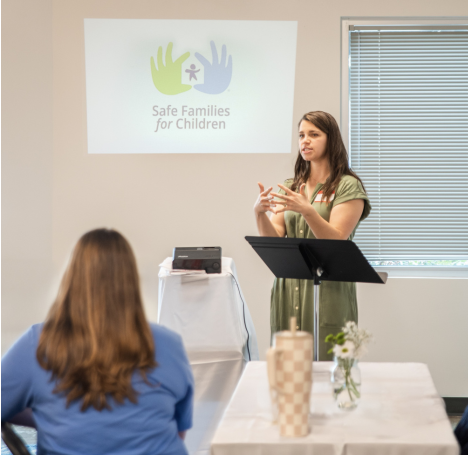by Cheyenne Erickson, Chapter Director of Safe Families Austin, TX
At Safe Families for Children, we often describe our work as a bridge between the community and the church. But what does that truly mean? What does it look like in practice for local congregations to step into the lives of families facing crisis and make a lasting impact?
We’ve noticed common hesitation when engaging with Christians, including pastors and church leadership. Many believers deeply desire to serve those in need, but past experiences have made them wary. Some have offered financial help, only to feel taken advantage of when requests for more continued. Others have opened their homes to someone struggling, only to see the situation fall apart, leaving them discouraged and unsure how to move forward. Patterns of brokenness have, in some cases, caused the church to retreat rather than engage.
Yet, for many others, the hesitation is not from past wounds but from feeling overwhelmed. With so much need in the world, where does one even begin? How can a single individual—or even a single church—offer real, lasting change? Safe Families provides a framework that allows the church to step in wisely, compassionately, and effectively.
Safe Families acts as a translator between the community’s needs and the church’s calling to love and serve. Through structured support, training, and professional guidance, we provide a pathway for churches to engage in crisis ministry with healthy boundaries and sustainable impact.
We recently saw this partnership in action as 25 local pastors gathered at the Safe Families Austin, TX office to hear directly from two of our referral sources: a social worker from the Travis County Family Drug Court and a social worker from SAFE. These professionals work daily with parents facing social isolation, addiction, and overwhelming challenges as they fight to keep their families together.

During the discussion, one pastor asked a pivotal question:
“What would you hope to see from Safe Families in the future?”
The response from both social workers was immediate and powerful: “We want every family we serve to be partnered with a Safe Families volunteer.“
For these professionals, who witness firsthand the struggles of families in crisis, Safe Families is not just another program—it’s an essential lifeline. Their words were a humbling and affirming reminder that the church is needed in this work.
Pastor Justin Christopher from Midtown Church also shared his journey as a Ministry Lead and Family Coach with Safe Families. He spoke candidly about the struggles he and his team faced while walking alongside a mother in crisis—helping her find transportation, secure employment, and navigate her son’s behavioral challenges. There were no quick fixes, and the road was not easy.
But over time, something beautiful happened.
Through his church’s steady, unwavering presence, this mother and her children became part of the community. They weren’t just served but welcomed, known, and loved. This year, that mother was baptized, and her children were dedicated—a tangible picture of a life transformed by the radical hospitality of the church.
Stories like this remind us that the church is uniquely positioned to step into the lives of struggling families—not with quick handouts or distant charity, but with authentic relationships and lasting support.

